
Are you a runner wondering if cross-training can take your performance to the next level or keep injuries at bay? The buzz around cross-training often paints it as the ultimate solution for runners looking to boost performance and reduce injuries. But how much of that buzz is fact, and how much is fiction?
In this article, we’ll explore cross-training in-depth with insights from experts Adam, Chase, and AJ, all experienced in physical therapy and running. By the end, you’ll have a clear understanding of how (and if) cross-training can complement your running goals.
What Is Cross-Training, and Why Do Runners Do It?
Cross-training involves incorporating activities other than running into your training routine to improve fitness, enhance performance, or recover from injury. Examples include cycling, swimming, yoga, and strength training. But why do runners turn to cross-training in the first place?
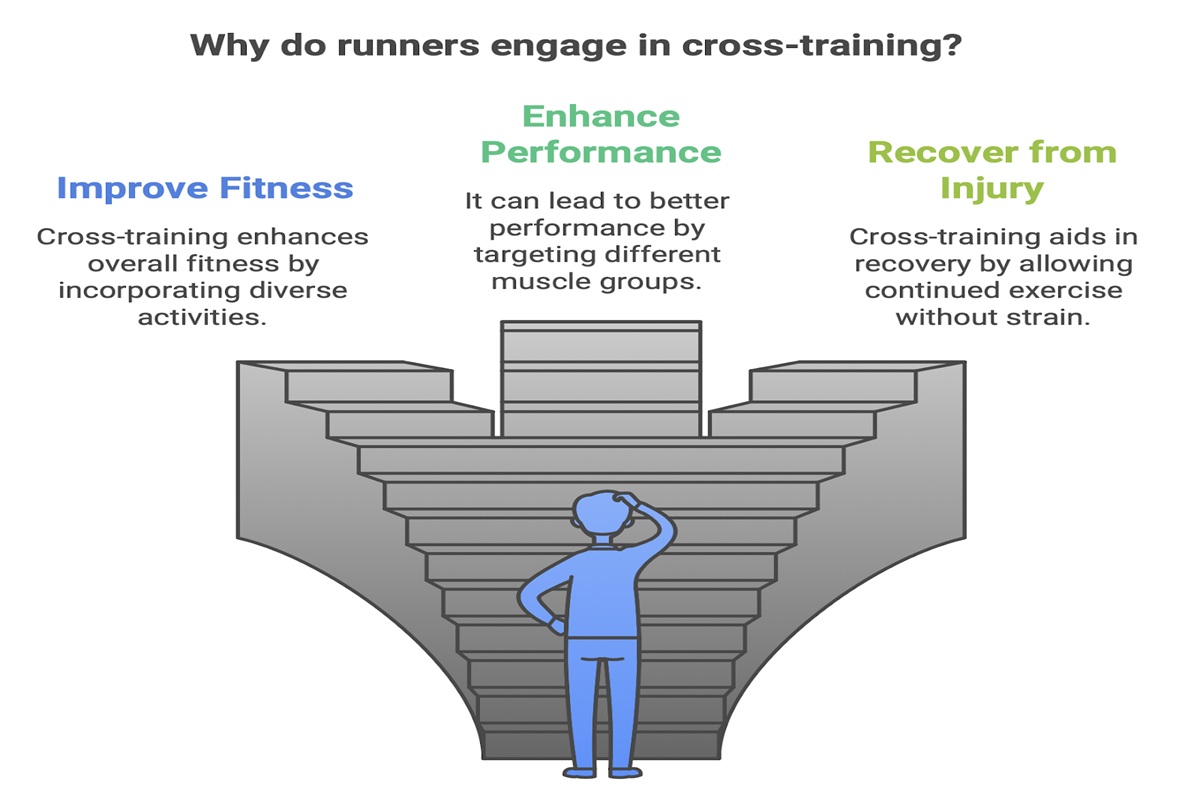
1. To Prevent Injuries
One of the most common reasons runners embrace cross-training is to prevent injuries. The belief is that varying activities can reduce the repetitive stress running places on joints and muscles.
However, Adam, a seasoned physical therapist, points out that the term “injury prevention” can be misleading. “There’s no foolproof way to prevent injuries entirely,” he explains. Instead, cross-training may help reduce injury risks when done thoughtfully, but it shouldn’t be seen as a silver bullet.
2. To Maintain Fitness During Injury Recovery
When runners face injuries, cross-training becomes a lifeline. Activities like biking, swimming, or using the elliptical help maintain aerobic fitness without stressing the injured area. Chase, another expert in the field, highlights that these activities allow runners to stay active while giving their bodies time to heal.
3. To Break the Monotony of Training
Running can be demanding both physically and mentally. Cross-training provides variety, helping runners stay motivated and avoid burnout. Incorporating fun activities like dance, hiking, or team sports can add excitement to your routine.
Are You Really “Injury-Prone”? Debunking the Myth
Have you ever been labeled “injury-prone”? Many runners identify this way, but Adam challenges the notion. “Runners aren’t inherently prone to injuries,” he argues. Instead, injury patterns often stem from improper training habits, like doing too much, too soon, or neglecting recovery.
The key to avoiding injuries lies in balancing training frequency, duration, and intensity. Even the best cross-training regimen won’t help if your running schedule is unsustainable. AJ adds that managing your ego and embracing training maturity are vital for long-term success. Sometimes, the best injury prevention is learning when to scale back.
Cross-Training for Injury Reduction: Myth or Reality?
So, can cross-training reduce injuries? The answer lies in perspective. Chase emphasizes that cross-training is a supplement, not a replacement, for a solid running program.
What Cross-Training Can’t Do:
- Replace good running form: Poor technique will lead to injuries regardless of how much cross-training you do.
- Prevent overtraining: Piling intense cross-training sessions onto an already packed running schedule may do more harm than good.
What Cross-Training Can Do:
- Address muscle imbalances: Activities like strength training can target weak areas and improve stability.
- Reduce repetitive strain: Swapping a run for a swim or bike ride occasionally gives your joints a break while keeping you active.
Does Cross-Training Improve Running Performance?
Many runners hope that cross-training will enhance their running performance. While it can improve general fitness, it doesn’t always translate to faster race times or more endurance.
The Principle of Specificity
AJ explains the principle of specificity: “To get better at running, you need to run more.” Cross-training activities like swimming or cycling may boost cardiovascular fitness, but they don’t train the muscles, joints, and tendons in the same way running does.
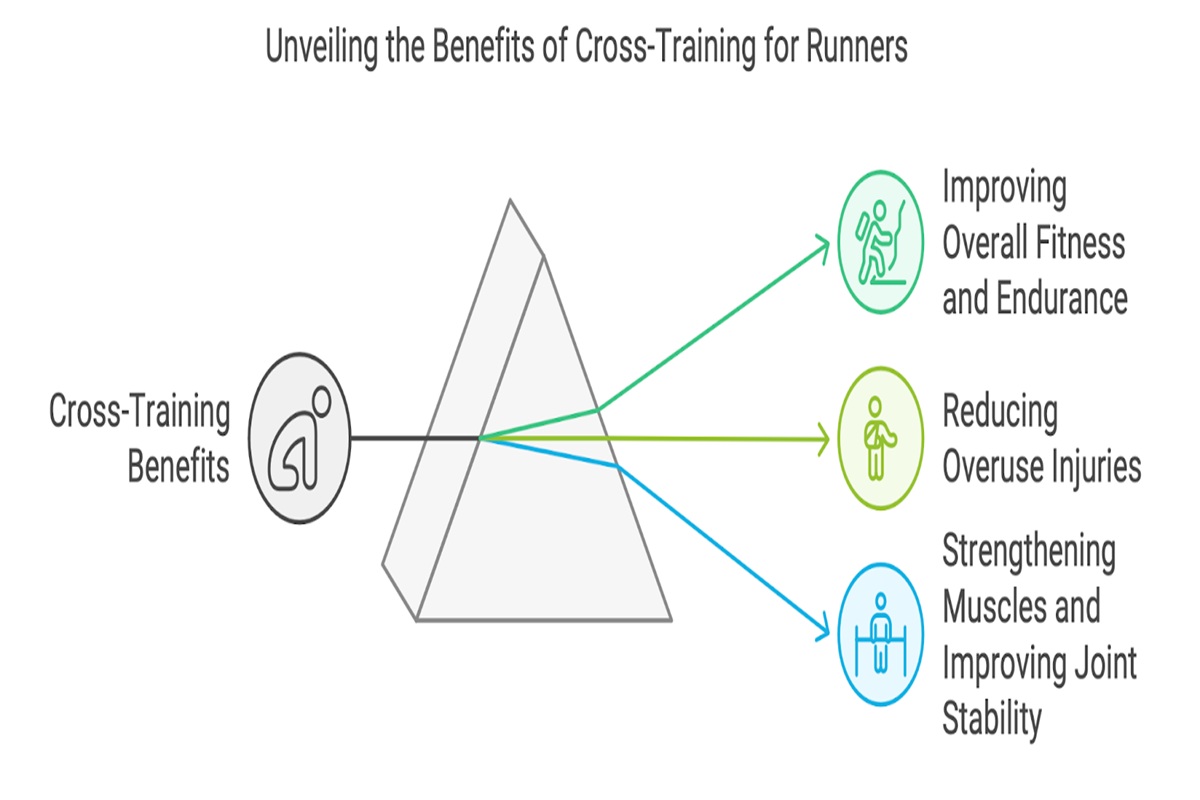
That said, cross-training can indirectly support performance by:
- Improving overall fitness and endurance.
- Reducing overuse injuries, allowing for more consistent running.
- Strengthening muscles and improving joint stability through activities like weightlifting or plyometrics.
Best Cross-Training Activities for Runners
Not all cross-training activities are created equal. When choosing an activity, consider how closely it mimics running or complements your goals.
Top Cross-Training Activities for Runners
- Elliptical Training: Mimics the running motion without the impact.
- Cycling: Builds leg strength and improves cardiovascular fitness.
- Swimming: A low-impact workout that enhances aerobic capacity.
- Strength Training: Improves muscle strength, stability, and power.
- Yoga or Pilates: Enhances flexibility, balance, and core strength.
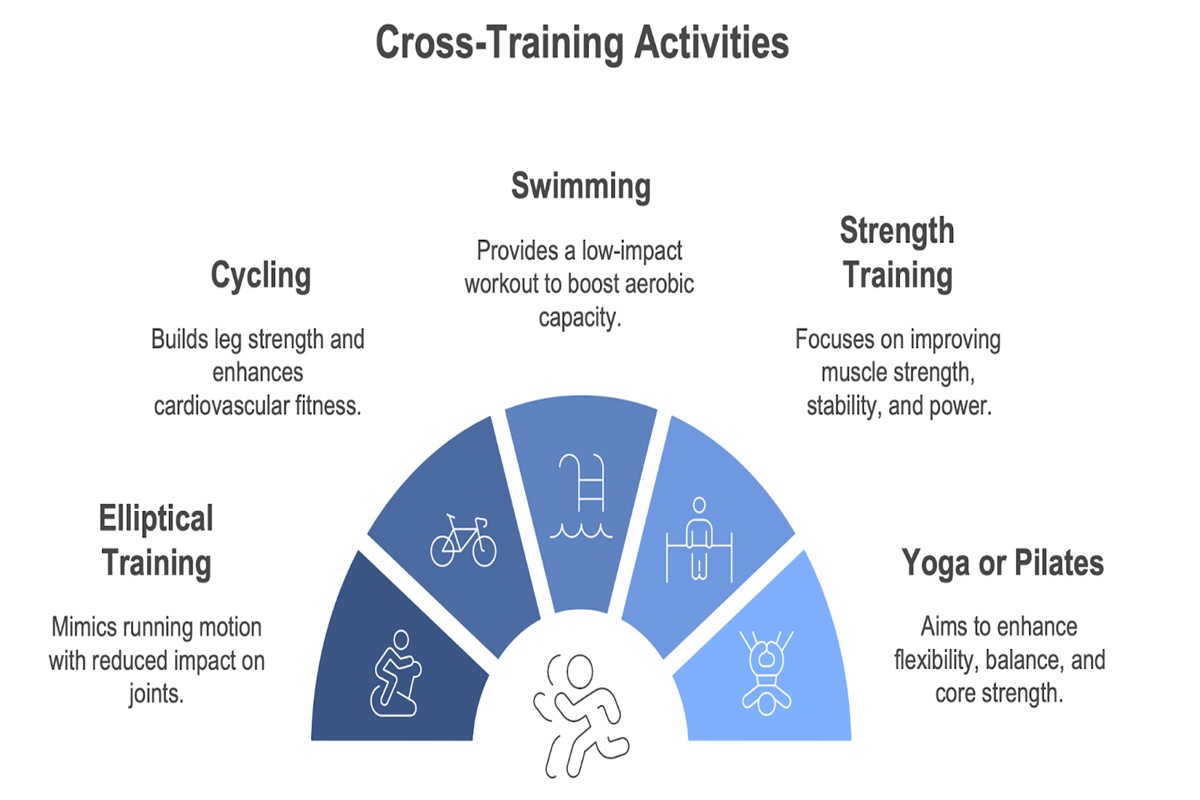
AJ also suggests adding fun, less conventional activities like ultimate frisbee or dance classes. These activities diversify physical capabilities and keep training enjoyable.
When to Use Cross-Training in Your Schedule
Incorporating cross-training into your running routine requires strategy. Here’s how to do it effectively:
1. During Recovery
When coming back from an injury, cross-training is invaluable. Use it to maintain fitness and rebuild strength without overloading your body.
2. As Active Recovery
Low-intensity activities like yoga or swimming can serve as active recovery on rest days, helping you stay loose and promote circulation.
3. In Off-Season Training
Cross-training is perfect for the off-season. It allows you to stay active while giving your body a break from high-mileage running.
4. To Supplement High Mileage
When training volume gets high, cross-training can prevent overtraining by replacing some running sessions with lower-impact activities.
Drawbacks of Cross-Training
While cross-training has benefits, it’s not without potential downsides. AJ highlights a few:
- Reduced Time for Running: Spending too much time on cross-training may detract from running-specific adaptations.
- Risk of Overtraining: Combining high-intensity cross-training with a demanding running schedule can lead to burnout or injury.
- Misplaced Expectations: Believing cross-training alone will solve running issues can lead to disappointment. Remember, it’s a tool, not a cure-all.
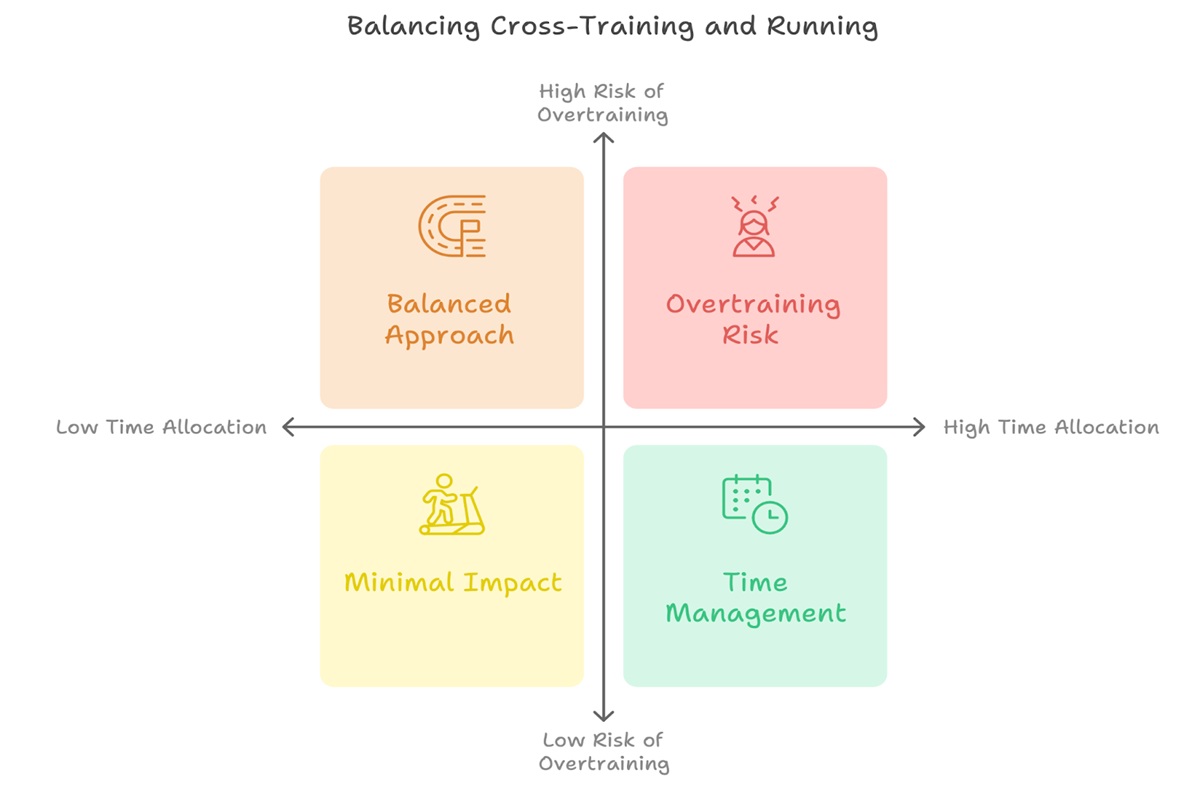
A Holistic Approach to Running and Cross-Training
The best training plans combine the specificity of running with the variety and support of cross-training. Here’s a balanced approach:
- Prioritize Running: Running should remain the cornerstone of your training if performance is your goal.
- Incorporate Strength Training: Build stronger muscles and bones, reducing the risk of injuries.
- Listen to Your Body: Rest when needed and scale back if you feel fatigued or sore.
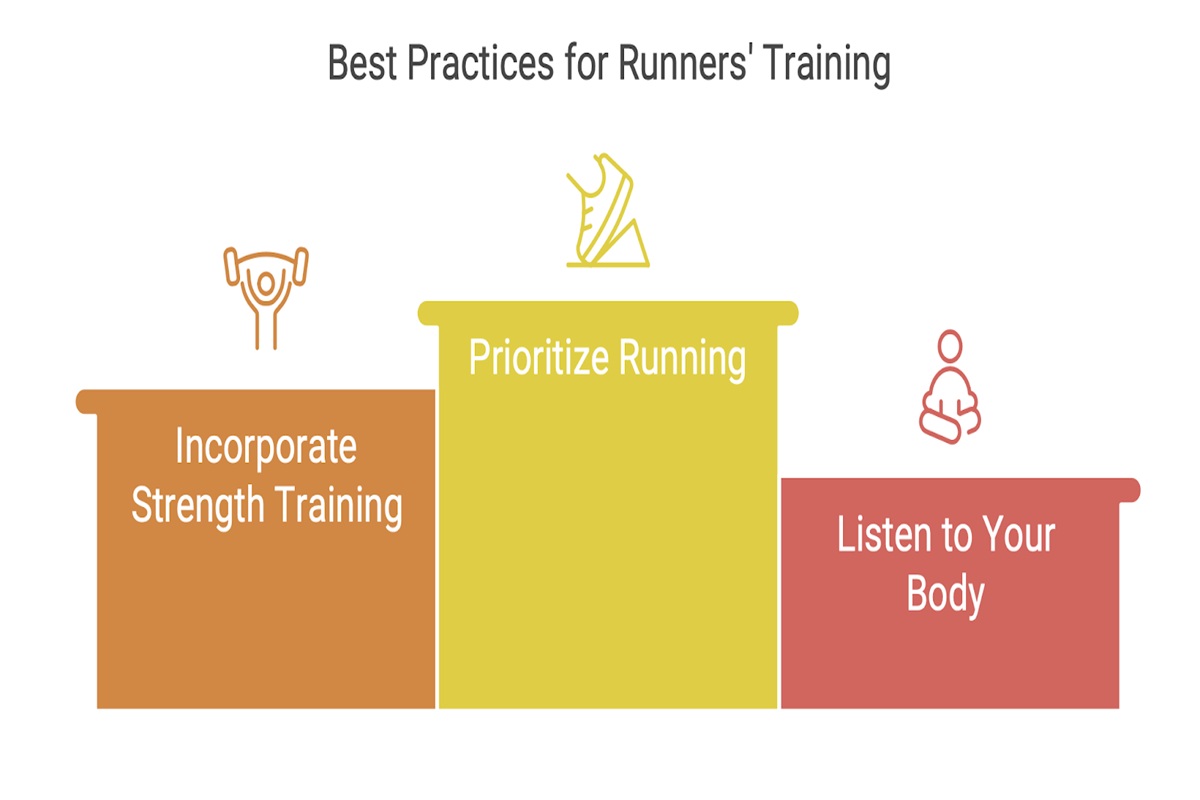
By focusing on long-term health and fitness rather than short-term fixes, you can enjoy running for years to come.
Conclusion: Should You Cross-Train?
The answer depends on your goals. If you’re chasing a marathon PR or building endurance, prioritize running while using cross-training as a supplement. If you’re seeking variety, injury resilience, or simply want to stay active, cross-training can be a valuable addition.
Key Takeaways:
- Cross-training is not a magic solution but a helpful tool when used strategically.
- Injury reduction depends more on smart training and recovery than on cross-training alone.
- Specificity matters: To become a better runner, you need to run.
Whether you’re lacing up your running shoes or grabbing a yoga mat, remember that the ultimate goal is to enjoy the journey. Stay tuned to The Making Strides Podcast for more expert insights. As we like to say, keep making strides—and maybe try something new along the way!

